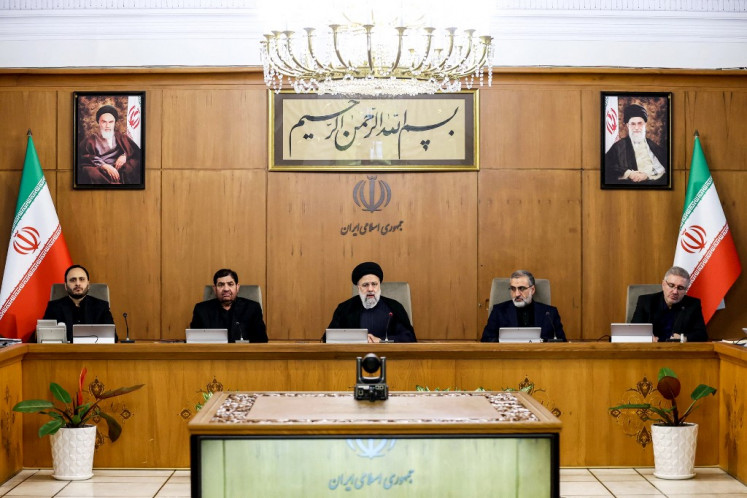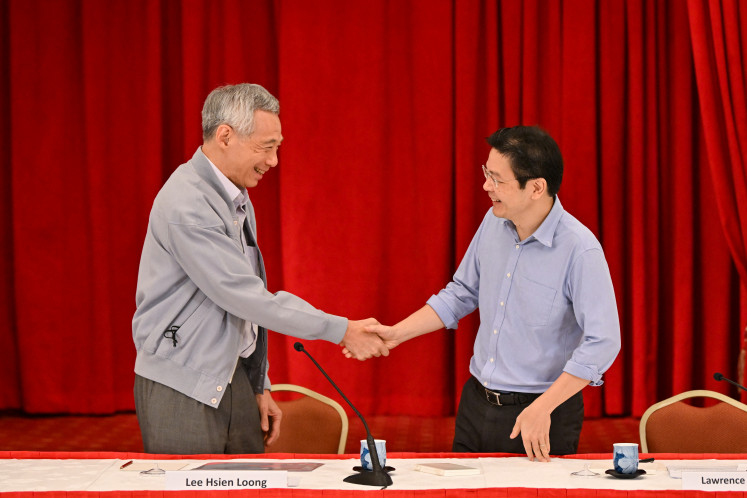The latest in TV technology
How much time do you spend watching TV every day? If you spend a lot of time in front of the TV screen, whether alone or with your family, then you are not the only one
Change Size

H
ow much time do you spend watching TV every day? If you spend a lot of time in front of the TV screen, whether alone or with your family, then you are not the only one.
Fortunately current TV technology not only enables you to watch programs, but digital TVs enable you to work, play and so forth either by yourself or together with your family. All this is due to the spectacular invention that combines high definition audio visual gadgets and information technology in the form of LCD TV.
With the latest IT audio visual technology incorporated in LCD TV you can enjoy the maximum experience in entertainment and multimedia. One such LCD TV is manufactured by Acer.
LCD TV Acer has a unique physical appearance, which is quite different than other LCD TVs. It has a modern look and has two powerful speakers at the bottom. It also gives an artistic touch to the living room or bedroom as it is slim and compact. Its flat screen is quite trendy as well.
New technological developments have indeed made an impact on televisions. Previously they contained Cathode Ray Tube (CRT) which made them huge gadgets. Later on there was Plasma TV and LCD (Liquid Crystal Diode) which enabled manufacturers to produce slim and flat TV screens instead of bulky ones.
However Plasma TV consumes a lot of electricity as it has a screen cooler system. A few years later came the LCD TV which uses a similar technology to laptop and flat monitor screens. The LCD screen consists of millions of crystals covered by a thin glass and each crystal has a different response to electricity, producing vibrant colors.
Both Plasma and High Definition LCD TV have sharper and more three dimensional pictures, but LCD TV has a higher resolution as it contains more pixels. LCD TV is also superior to plasma TV, because it has no phosphors so it needs less energy while its external light source is also cooler than Plasma TV.
As a result the slimmer and lighter LCD TV, which was introduced in 2007, took over the position of Plasma TV in the market. However, today, next to Plasma and LCD TV you can also enjoy the latest slim and flat screen TV, namely the LED (Light Emitting Diode) TV.
Out of the three high-end televisions, Plasma, LCD and LED, of course LED utilizes the latest technology which is more environmentally friendly. While the LED will not immediately replace LCD, it will enhance it further and make it more sophisticated.
LED’s flat screen is much thinner because it incorporates white LED lights on four corners of the television panel as the main light source instead of the conventional back light that needs more space.
According to product manager of PT Toshiba Visual Media Network Indonesia, Bayu M. K. Sinulingga, previously flat screen televisions used backlighting called CCFLs (Cold Cathode Fluorescent Lamps) while LED consumes less energy and has a slimmer shape.
Each television manufacturer has equipped their LED TVs with various technology for the benefit of their customers. Toshiba LED TVs, for example, said Bayu, produce more natural and sharper pictures with its High Definition technology so even if the signals are weak the pictures remain beautiful.
Other manufacturers, such as NEC, Samsung and Panasonic use similar technology and have even incorporated three dimensional technology in their LED TVs.
Using High Definition technology LED TVs have a high resolution, 1.902 x 1080p to produce sharper and clearer pictures. They also have superior time response to produce pictures without shadows as well as a contrast ratio that is ideal for bright and dark areas of pictures. So, principally LED TVs have superior contrast, color and clarity. And, Samsung LED Series 6, 7 and 8 produces all of these perfectly for your viewing satisfaction.
Meanwhile NEC claims that its products are far more practical and user-friendly as the features are convenient to use and meet viewer’s requirements.
Samsung also says that its LED Series have been enhanced with a feature called Mega Contrast Ratio that can produce a darker black and a brighter white to make colors more vivid.
For more expressive colors Samsung LED Series is also equipped with Wide Color Enhancer Pro and Motion Plus to produce better fast pictures so that you can have a real experience of a program. During a basketball match, for example, you will feel that you are really sitting in the hall and can feel every movement of the players and the ball.
Another superior feature of Samsung LED Series is that they consume less energy, 40 percent less than other flat screen TVs. Using the USB 2.0 cable you can also watch and edit photos, while on Samsung LED 7 and 8 you will find the Internet capable feature with DLNA support and internet port for multimedia entertainment with your family.
Indeed we can never guess how far technology will develop, but clearly its sophistication will be beneficial for consumers and make life much more convenient.









